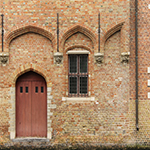Euroacademia Conferences
 Europe Inside-Out: Europe and Europeanness Exposed to Plural Observers (9th Edition) April 24 - 25, 2020
Europe Inside-Out: Europe and Europeanness Exposed to Plural Observers (9th Edition) April 24 - 25, 2020 Identities and Identifications: Politicized Uses of Collective Identities (9th Edition) June 12 - 13, 2020
Identities and Identifications: Politicized Uses of Collective Identities (9th Edition) June 12 - 13, 2020 8th Forum of Critical Studies: Asking Big Questions Again January 24 - 25, 2020
8th Forum of Critical Studies: Asking Big Questions Again January 24 - 25, 2020 Re-Inventing Eastern Europe (7th Edition) December 13 - 14, 2019
Re-Inventing Eastern Europe (7th Edition) December 13 - 14, 2019 The European Union and the Politicization of Europe (8th Edition) October 25 - 26, 2019
The European Union and the Politicization of Europe (8th Edition) October 25 - 26, 2019 Identities and Identifications: Politicized Uses of Collective Identities (8th Edition) June 28 - 29, 2019
Identities and Identifications: Politicized Uses of Collective Identities (8th Edition) June 28 - 29, 2019 The European Union and the Politicization of Europe (7th Edition) January 25 - 26, 2019
The European Union and the Politicization of Europe (7th Edition) January 25 - 26, 2019 7th Forum of Critical Studies: Asking Big Questions Again November 23 - 24, 2018
7th Forum of Critical Studies: Asking Big Questions Again November 23 - 24, 2018 Europe Inside-Out: Europe and Europeanness Exposed to Plural Observers (8th Edition) September 28 - 30, 2018
Europe Inside-Out: Europe and Europeanness Exposed to Plural Observers (8th Edition) September 28 - 30, 2018 Identities and Identifications: Politicized Uses of Collective Identities (7th Edition) June 14 - 15, 2018
Identities and Identifications: Politicized Uses of Collective Identities (7th Edition) June 14 - 15, 2018
Like a Bomb Hit it! The Urban Regeneration of Manchester since 1996
-
-

-
Presentation speakers
- Eamonn Canniffe, Manchester School of Architecture
Abstract:
The closure of a prolonged period of economic stagnation has brought an opportunity to make a critical assessment of recent urban developments in Manchester since the city was bombed by the I.R.A. in 1996. Praised in the popular and professional press as innovative examples of urban regeneration they have introduced often dramatic change into the Mancunian cityscape, but the incompleteness of their resolution, and the fragmentary discontinuity their thwarted plans have produced is firmly rooted in an urban tradition identified by Rowland Nicholas well over sixty years ago. In the 1945 City of Manchester Plan he commented that `the spirit of materialism and indifference to beauty … has been mainly responsible for the undistinguished appearance of the present city centre.´ The contention of this paper is that, despite massive and expensive reconstruction, his observation still holds true. Manchester’s status as a problematic example of British urban regeneration presents difficulties in assessing the impact and significance of urban design. On a broad scale the city has successfully repositioned itself during these two decades, and the speed with which the city centre was reconfigured after the 1996 bomb stoked an appetite for rebuilding which barely paused during the recession. Yet the quality of designed urban environment that has been created is generally poor, with little consistent relationship between the new elements and the existing fabric or even between the new buildings and spaces. The centre has been developed in a way that has detached it further from the significant areas of deprivation which surround it. As a demonstration of urban rebranding which has exacerbated the problems it is ostensibly intended to address it is a unique example of the disjunction between content and form. The initial growth of Manchester led to it being characterised by Asa Briggs as a ‘shock city’. That sense of shock continues to be an emotion which many visitors and residents share.
-
Related Presentations

Legal and Political Aspects of the European Union Citizenship
- Zbigniew Czubinski

















